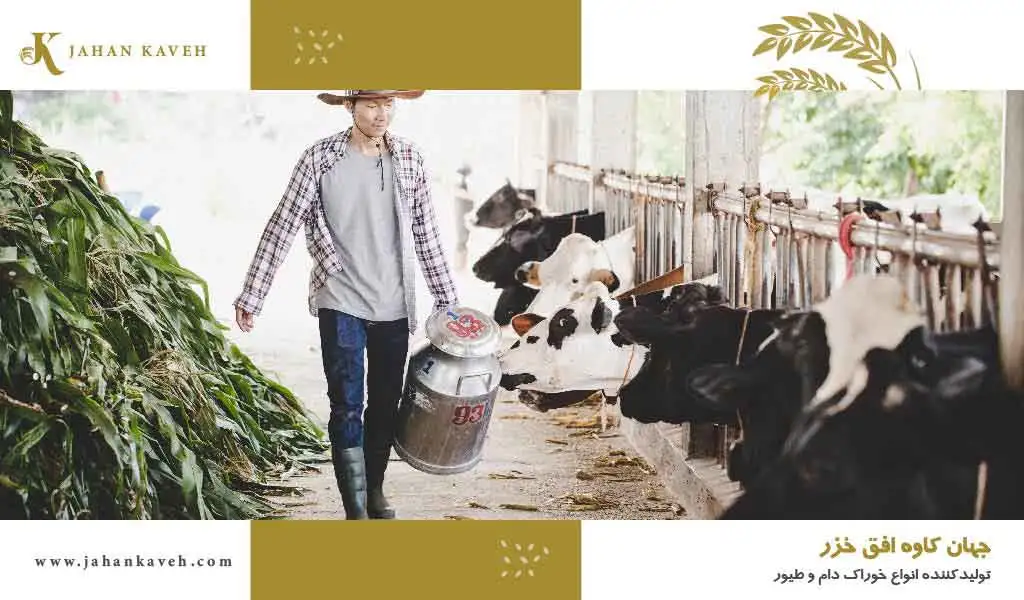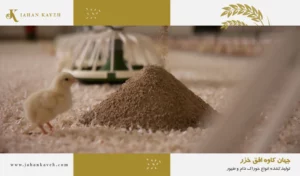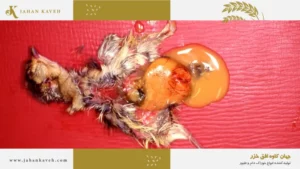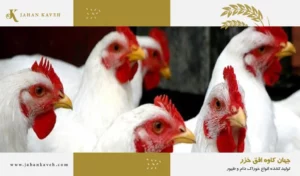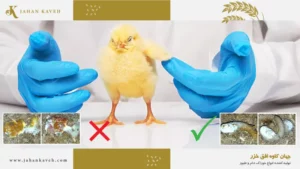What is Cattle Concentrate and How Many Types Are There?
There are two main categories of cattle feed: concentrates (grains) and forages (pasture, hay, silage). Roughages are typically high in fiber. Concentrates are typically high in protein or carbohydrates. In fact, cattle concentrate refers to the nutrients that forage alone cannot provide. The importance of these nutrients is particularly evident in high production, such as large-scale milk or meat production. This is because animal nutrition is one of the most important factors in the quality of the final product and the producer’s efficiency. In general, there are two types of concentrated feed: carbonaceous and proteinous.
- Protein concentrates or “protein feeds” contain high levels of protein (over 15%). Examples include soybean meal, cottonseed meal, peanuts (groundnuts), flaxseed (linseed), rapeseed, cottonseed, coconut, palm oil, and sunflower seeds. The amount of protein is generally more important than the quality of protein (amino acid content) in ruminants, as the microorganisms in the rumen produce their own body protein. Cattle do not store excess protein. Excess protein is either burned by the body or excreted by the kidneys (as nitrogen).
- Carbonaceous concentrates or “energy” feeds have a total digestible nutrient content but are low in protein (11-8%). They include cereal grains – corn, barley, wheat, oats, sorghum (Milo) and rye or buckwheat (ryo).
Types of Cattle Concentrate: A Step Towards Ideal Livestock Nutrition
Cattle concentrates differ based on whether they are intended for fattening or dairy cattle. The composition of concentrates is divided into various types depending on the nutritional needs of the animal, including:
- Dairy cattle concentrate: To increase milk production and improve its quality
- Beef cattle concentrate: To increase weight gain and produce high-quality meat
- Sheep and goat concentrate: To increase meat, milk, and wool production
While the same concentrate may sometimes be used for both heavy and light livestock, the amount consumed differs between the two.
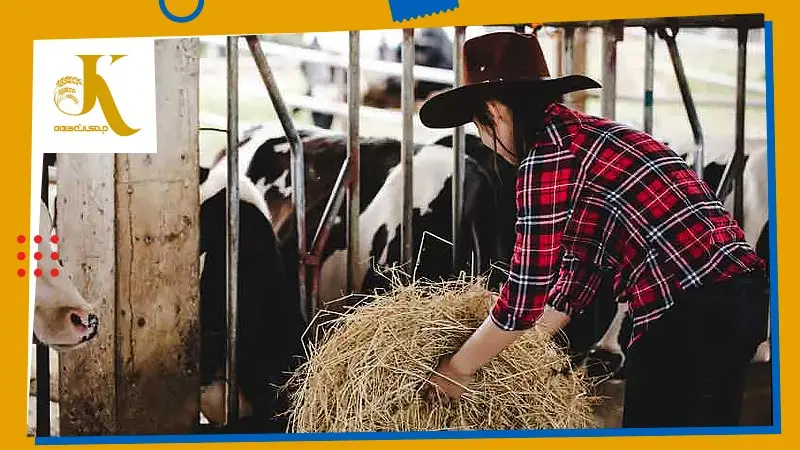
General Composition of Cattle Concentrate Types
As explained in the previous section, the ingredients and dosage of concentrate can vary depending on the needs of the animal. However, the general ingredients of cattle concentrate are as follows:
- Grains: Grains are a major source of energy for cattle and provide carbohydrates, which are essential for growth and maintenance. Common grains used in concentrate include corn, barley, wheat, and oats.
- Plant Proteins: Plant proteins are another important source of nutrients for cattle, providing essential amino acids for muscle development and other bodily functions. Common plant proteins used in concentrate include soybean meal, cottonseed meal, and canola meal.
Animal Proteins: Animal proteins can also be included in cattle concentrate, particularly for dairy cows or high-performance cattle. Animal proteins provide a more complete amino acid profile and can improve feed conversion efficiency. Examples of animal proteins include fishmeal, blood meal, and feather meal.
Molasses: Molasses is a by-product of sugar refining and is a source of energy and palatability for cattle. It can also help to bind the ingredients in a concentrate and improve its overall consistency.
Fats: Fats are a concentrated source of energy and can improve the palatability of concentrate. They can also help to increase the energy density of the feed, which can be beneficial for high-performance cattle. Common fats used in concentrate include tallow, vegetable oil, and canola oil.
Vitamins: Vitamins are essential for various metabolic processes in cattle and play a crucial role in maintaining overall health and productivity. Common vitamins added to concentrate include vitamin A, vitamin D, vitamin E, and B vitamins.
Minerals: Minerals are also essential for various bodily functions in cattle, including bone health, muscle function, and nerve transmission. Common minerals added to concentrate include calcium, phosphorus, magnesium, and trace minerals.
High-quality concentrate can help maintain body condition and optimize performance in cattle. Some concentrates may have a lower protein content and are specifically designed to supplement forage-based diets. These concentrates may include plant proteins, urea, vitamins, essential minerals, rumen modifiers, and limestone, and are intended to be mixed with grains and forages to create a complete ration.
The method of concentrate consumption can vary depending on the ruminant’s dietary regimen and the composition of the concentrate. It is therefore crucial to consult with a livestock nutrition specialist to determine the most appropriate feeding method for your particular situation.
Advantages of Using Cattle Concentrate for Livestock Farms
In addition to the reduced weight due to the dehydration of concentrate ingredients, which also lowers material volume, potential spoilage, and transportation costs, cattle concentrate offers several significant advantages for livestock farms:
- Increased Production: Depending on the type of concentrate, it can lead to higher production of meat, milk, and other products.
- Improved Product Quality: By providing essential vitamins and minerals, concentrate helps enhance the quality of meat, milk, and wool produced by livestock.
- Strengthened Immune System: The supply of vitamins and minerals in concentrate contributes to a stronger immune system in livestock, reducing the risk of diseases.
- Reduced Production Costs: By increasing production and feed efficiency, the use of concentrate ultimately leads to lower livestock production costs.
- Minimized Feed Waste: With its balanced formula, concentrate minimizes feed waste and prevents the loss of valuable food resources.
- Reduced Transportation and Storage Costs: The compact and shelf-stable nature of concentrate reduces transportation and storage expenses.
- Elimination of Labor Errors in Feed Preparation: Due to its precise formulation, there is no need for workers to mix ingredients, saving time and labor costs.
- Improved Management and Control: The use of concentrate allows for more precise management and control of nutrient intake, ensuring that animals receive the exact amounts they need for optimal growth and production.
- Enhanced Environmental Sustainability: By reducing feed waste and improving feed efficiency, concentrate contributes to a more sustainable livestock production system.
- Versatility and Adaptability: Concentrate can be tailored to meet the specific nutritional needs of different types of livestock at various stages of their life cycle.
Overall, cattle concentrate plays a crucial role in modern livestock production by providing a concentrated source of nutrients that promotes animal health, growth, and productivity while reducing costs and environmental impact. When used appropriately and in conjunction with other feedstuffs, concentrate can significantly enhance the profitability and sustainability of livestock farms.
Types of Cattle Concentrate
Cattle concentrates are classified into various categories based on the type of livestock and their nutritional requirements. Here, we’ll discuss two of the most common types of concentrates: dairy cattle concentrate and fattening concentrate.
- Dairy Cattle Concentrate: This type of concentrate is specifically formulated to increase milk production and improve milk quality in dairy cows. Dairy cattle concentrate is rich in energy, protein, vitamins, and minerals, all of which are essential for producing high-quality milk.
- Fattening Concentrate: This type of concentrate is designed to promote rapid weight gain and produce high-quality meat in animals like cattle, sheep, and goats. Fattening concentrate is rich in energy and protein, which are crucial for muscle growth and weight gain.
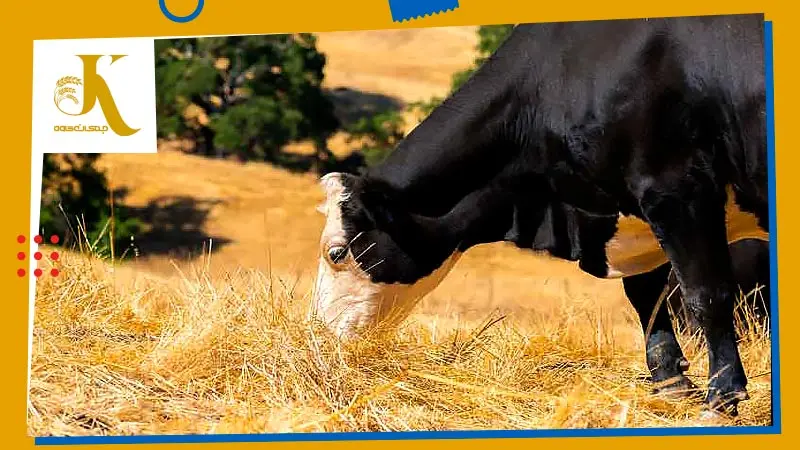
How to Make Cattle Concentrate
Producing cattle concentrate is a complex process that requires specialized knowledge, appropriate equipment, and high-quality raw materials. However, the general steps involved in cattle concentrate production are as follows:
- Procurement of Raw Materials: The first step in producing concentrate is to obtain high-quality raw materials. The raw materials used in livestock concentrate include grains (corn, barley, wheat, etc.), legumes (soybeans, sunflower meal, etc.), oilseeds (sesame, rapeseed, etc.), vitamins, minerals, fats and oils, livestock baking soda, and permitted additives. The quality of the raw materials directly impacts the final quality of the concentrate and the health of livestock and poultry.
- Grinding Raw Materials: Before mixing the raw materials, they must be ground into fine particles. Grinding increases the surface area of the materials, improving digestion by livestock and poultry.
- Mixing Raw Materials: In this step, the ground raw materials are precisely mixed according to the specific formulation for each type of concentrate. The concentrate formulation should be based on the nutritional needs of the livestock or poultry, their age, breed, sex, and physiological conditions.
- Cooking and Processing: In some cases, after mixing the raw materials, they are cooked or processed. Cooking and processing eliminate anti-nutritional factors present in some raw materials and enhance their digestibility.
- Adding Vitamins and Minerals: After cooking or processing, the required vitamins and minerals are added to the mixture. Vitamins and minerals are essential for the health and proper functioning of the livestock or poultry’s body.
- Adding Permitted Additives: Finally, permitted additives such as enzymes, acidifiers, and antifungals are added to the mixture. These additives can improve concentrate quality, increase shelf life, and maintain the health of livestock and poultry.
- Pelleting: Pelleting refers to the process of compressing materials through a die to form a cylindrical shape with a length that is usually 2 to 4 times its diameter.
- Drying and Packaging: After adding all the ingredients, the concentrate must be thoroughly dried to prevent mold and fungal growth. The dried concentrate is then packaged in suitable bags and stored.
Key Points:
- Cattle concentrate production should be under the supervision of livestock and poultry nutrition specialists.
- The amount of ingredients and the concentrate formula should be determined by experts in this field.
- High-quality raw materials with the necessary standards must be used.
- The equipment used in concentrate production must be regularly cleaned and disinfected.
- Storage conditions for concentrate should be appropriate to maintain its quality.
Considering these points, and the importance of the concentrate formula for the final result, our recommendation is to procure concentrate from reputable sources. This is because the production of this product requires specialized knowledge and appropriate equipment, and failure to comply with health and safety regulations can lead to financial and even life-threatening risks.
Key Points to Consider When Buying Cattle Concentrate
When purchasing cattle concentrate, it is crucial to prioritize the nutrient content (energy, protein, minerals, fiber, and starch) over the mere list of ingredients. Always make informed decisions based on the nutritional value of the concentrate. Here are some essential aspects to keep in mind:
Understand Your Cattle’s Nutritional Needs: The first step is to identify the specific nutritional requirements of your cattle. This depends on factors such as age, breed, gender, physiological status (pregnancy, lactation), and environmental conditions (climate, pasture quality).
- Seek a Concentrate with Balanced Nutrient Content: A high-quality concentrate should contain balanced levels of protein, energy, minerals, fiber, and starch to meet all the nutritional needs of your livestock.
- Pay Attention to the Product Label: The concentrate label must provide comprehensive information on nutrient content, ingredients, and usage instructions.
- Purchase from Reputable Brands: Always buy cattle concentrate from trusted and recognized brands to ensure product quality and safety.
- Opt for Fresh Concentrate: Cattle concentrate should be fresh and stored under appropriate conditions to prevent spoilage and nutrient loss.
- Consult a Livestock Nutritionist: If you are unsure about choosing the right concentrate for your cattle, consult a livestock nutritionist. They can recommend the best concentrate based on your specific needs.
- Seek Reasonable Pricing: Cattle concentrate prices can vary depending on the brand, quality, and nutrient content. Compare prices from multiple vendors to find the best value for your chosen concentrate. However, remember not to compromise quality for price.
- Look for Quality Certifications: Some cattle concentrates hold quality certifications from reputable organizations. These certifications indicate product quality and safety. For instance, products from the company “Jahan Kaaveh” hold HACCP and GMP certifications.
- Mind the Expiration Date: Cattle concentrate has an expiration date. Avoid purchasing concentrate that is past its expiry date.
- Store Concentrate Appropriately: Cattle concentrate should be stored in a cool, dry place away from direct sunlight.
By adhering to these guidelines, you can ensure that you are purchasing high-quality and suitable concentrate for your cattle, contributing to their health, productivity, and overall well-being.
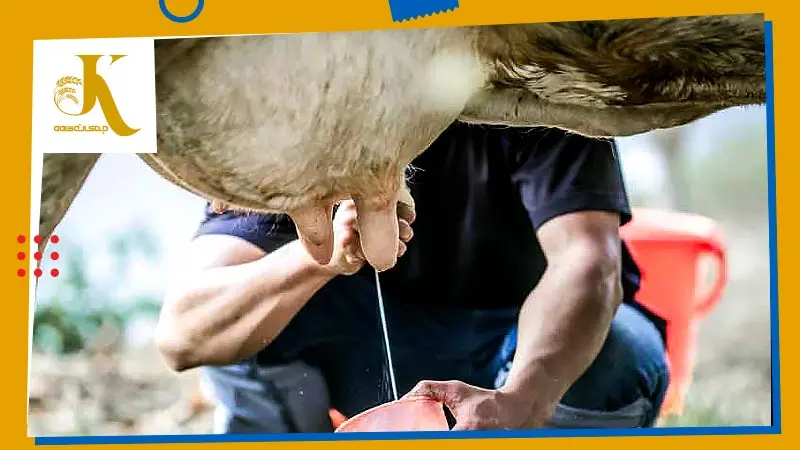
Dairy Cattle Concentrate and Its Advantages: A Step Towards Higher Milk Production and Quality
Dairy cattle concentrate is a type of supplementary and nutritious feed specifically designed to increase milk production and improve milk quality in dairy cows. This high-quality feed is made from premium raw materials and offers numerous benefits to dairy farmers. Key Benefits of Using Dairy Cattle Concentrate:
- Increased Milk Production: Dairy cattle concentrate, by providing the necessary energy, protein, vitamins, and minerals for milk production, significantly contributes to increasing the quantity and quality of milk produced by dairy cows.
- Improved Milk Quality: Dairy cattle concentrate, by supplying essential vitamins and minerals, helps enhance the quality of milk produced in terms of taste, aroma, fat, protein, and other nutrients.
- Enhanced Reproductive Performance
Reduced Feed Waste: Dairy cattle concentrate, with its balanced and palatable formulation, minimizes feed waste and prevents the wastage of food resources. - Improved Health of Dairy Cows: Dairy cattle concentrate, by providing essential vitamins and minerals, strengthens and improves the immune system function of dairy cows, preventing diseases and increasing their lifespan.
- Reduced Production Costs: Using dairy cattle concentrate, by increasing milk production and feed efficiency, ultimately leads to lower milk production costs in the dairy unit.
Dairy cattle concentrate can vary depending on the age, breed, lactation period, and milk yield of the cow. Jahan Kaveh dairy cattle concentrates are offered in four products based on the rearing goal: low-milk concentrate, moderate-milk concentrate, high-milk concentrate, and super-milk concentrate. These concentrates are available in both mash and pellet forms. However, our general recommendation for your livestock is to use pelleted cattle concentrate.
Article: Understanding the Differences Between Mash, Crumble, and Pellet Cattle Concentrate
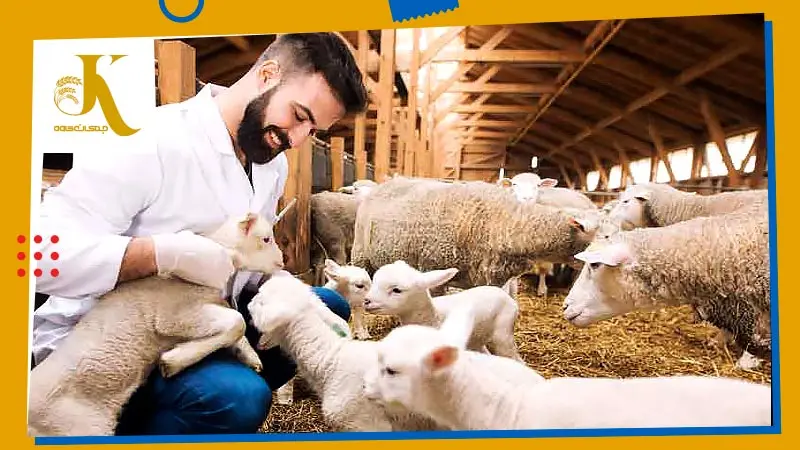
Fattening Cattle Concentrate and Its Advantages: A Step Towards Increased Weight Gain and High-Quality Meat Production
Fattening cattle concentrate is a type of supplementary and nutritious feed specifically designed to enhance weight gain and produce high-quality meat in livestock such as cattle, sheep, and goats. This high-quality feed is made from premium raw materials and offers numerous benefits to livestock farmers. Key Benefits of Fattening Cattle Concentrate:
- Improved Feed Conversion and Daily Weight Gain: Fattening cattle concentrate, by providing the necessary energy, protein, vitamins, and minerals for muscle growth, significantly contributes to rapid weight gain in livestock.
- Maximum Energy Level: Fattening cattle concentrate is formulated to provide the maximum energy required for optimal growth and development.
- Meeting the Nutritional Needs of Fattening Livestock: Fattening cattle concentrate is designed to meet the specific nutritional requirements of fattening livestock, ensuring they receive all the essential nutrients for proper growth and meat production.
- Enhanced Meat Quality: Fattening cattle concentrate, by supplying essential vitamins and minerals, helps improve the quality of the produced meat in terms of taste, aroma, fat, protein, and other nutrients.
- Reduced Feed Waste: Fattening cattle concentrate, with its balanced and palatable formulation, minimizes feed waste and prevents the wastage of food resources.
- Improved Animal Health and Reduced Digestive Disorders: Fattening cattle concentrate, by providing essential vitamins and minerals, strengthens the immune system of animals, prevents diseases, and increases their lifespan.
- Reduced Production Costs: Using fattening cattle concentrate leads to faster weight gain and improved feed efficiency, shortening the fattening period. This ultimately results in lower meat production costs in the livestock unit.
How to Find and Purchase the Best Cattle Concentrate
Choosing the best cattle concentrate for your herd plays a crucial role in their health, growth, and productivity. By considering various factors, you can identify a concentrate that aligns with your specific livestock needs, offering the highest quality and value for money. Here’s a step-by-step guide to finding the best cattle concentrate:
- Understand Your Livestock’s Needs:
- Type of Livestock: The first step is to determine the type of livestock you have. Dairy cows, beef cattle, sheep, and goats each have unique nutritional requirements.
- Age of Livestock: The age of your livestock will also influence the choice of appropriate concentrate. Young, adult, and senior animals have different nutrient needs.
- Breed of Livestock: The breed of your livestock can also impact concentrate selection. Certain breeds may require specific nutrients in higher amounts compared to others.
- Sex of Livestock: The sex of your livestock (male or female) may play a role in concentrate selection.
- Physiological Status: Physiological conditions such as pregnancy, lactation, or illness impose specific nutritional demands on your livestock.
- Conduct Research:
- Investigate Different Brands: Numerous brands produce cattle concentrate. By researching various brands, you can gain insights into their reputation, product quality, and market standing.
- Examine Concentrate Ingredients: Carefully review the list of ingredients in the concentrate. Ensure the quality and source of the raw materials align with your livestock’s needs.
- Assess Nutritional Value: Seek a concentrate that offers a balanced blend of protein, energy, vitamins, and minerals to fully meet your livestock’s nutritional requirements.
- Consider Price: Concentrate prices can vary significantly between brands and based on the quality of raw materials and nutritional value.
- Word-of-Mouth Recommendations: Seek recommendations from fellow farmers or livestock professionals regarding their preferred concentrate brands and the positive outcomes they’ve observed.
- Purchase from Reputable Suppliers:
- Authorized Dealers: Purchase concentrate from authorized dealers or distributors to ensure product authenticity and quality control.
- Online Retailers: Reputable online retailers can offer a wider range of concentrate options and competitive prices.
- Direct from Manufacturers: Consider purchasing directly from concentrate manufacturers for bulk quantities and potentially lower prices.
- Prioritize Quality over Price:
- While cost-effectiveness is important, never compromise quality for the sake of lower prices.
Invest in high-quality concentrate that provides the essential nutrients for optimal livestock health and productivity.
Consider the long-term benefits of improved growth, production, and overall well-being.
- While cost-effectiveness is important, never compromise quality for the sake of lower prices.
- Store Concentrate Properly:
Store concentrate in a cool, dry, and pest-free environment to maintain its freshness and prevent nutrient degradation.
Use airtight containers or sealed bags to protect the concentrate from moisture and air exposure.
Follow manufacturer’s storage instructions to ensure the quality and shelf life of the concentrate.
By following these guidelines and carefully selecting the best cattle concentrate for your herd, you can contribute to their optimal health, growth, and productivity, ultimately achieving a more successful and profitable livestock operation.
What is the best premium livestock concentrate in the UAE and the world, and how can one purchase livestock concentrate?
One of the best producers of livestock concentrates in the UAE is Dubai-based Jahan Kaveh Company. This company produces various types of premium livestock concentrates, such as dairy cow concentrate and beef cow concentrate, in Iran. The concentrates produced by this company are very economical and tailored to the production level, varying depending on the type of livestock and the goal of breeding, whether for dairy cows or beef cows.
To purchase livestock concentrate, whether for beef or dairy, you can contact our sales experts at +971564463132 or through the “Contact Us” page on our website.
References:

